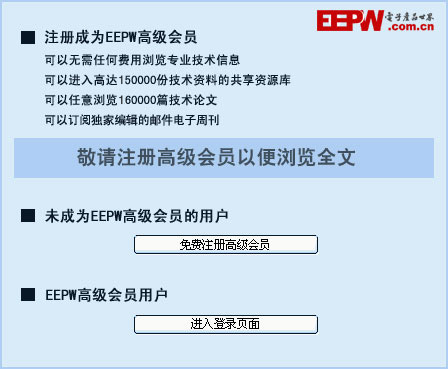征程 6 | 灰度圖部署鏈路介紹
數據結構:NV12 包含一個平面的 Y 分量(亮度信息)和一個平面的 UV 分量(色度信息),其中 Y 分量分辨率為 W×H,UV 分量分辨率為 W×H/2。
灰度圖提取:對于灰度圖部署,僅需使用 NV12 中的 Y 分量。以 1920×1080 分辨率為例,若 NV12 中 Y 與 UV 分量連續存儲,Y 分量占據前 1920×1080 字節,后續部分為 UV 分量,可直接忽略或舍棄,若分開存儲,使用起來更簡單。
insert_image_convert(self, mode str = “nv12”)
Insert image_convert op. Change input parameter type.
Args:
* mode (str): Specify conversion mode, optional values are "nv12"(default) and "gray".
Returns:
List of newly inserted function arguments which is also the inputs of inserted image convert op
Raises:
ValueError when this argument is no longer valid
Note:
To avoid the new insertion operator not running in some conversion passes, it is recommended to call the insert_xxx api before the convert stage
Example:
module = load("model.bc")
func = module[0]
res = func.inputs[0].insert_image_convert("nv12")insert_image_preprocess( self, mode str, divisor int, mean List[float], std List[float], is_signed bool = True)
Insert image_convert op. Change input parameter type.
Args:
* mode (str): Specify conversion mode, optional values are "skip"(default, same as None), "yuvbt601full2rgb", "yuvbt601full2bgr", "yuvbt601video2rgb" and "yuvbt601video2bgr".
Returns:
List of newly inserted function arguments which is also the inputs of inserted image preprocess op
Raises:
ValueError when this argument is no longer valid
Note:
To avoid the new insertion operator not running in some conversion passes, it is recommended to call the insert_xxx api before the convert stage
Example:
module = load("model.bc")
func = module[0]
res = func.inputs[0].insert_image_preprocess("yuvbt601full2rgb", 255, [0.485, 0.456, 0.406], [0.229, 0.224, 0.225], True)mean = [0.485] std = [0.229] func = qat_bc[0] for input in func.flatten_inputs[::-1]: split_inputs = input.insert_split(dim=0) for split_input in reversed(split_inputs): node = split_input.insert_transpose([0, 3, 1, 2]) node = node.insert_image_preprocess(mode="skip", divisor=255, mean=mean, std=std, is_signed=True) node.insert_image_convert(mode="gray")
mean = [0.485] 和 std = [0.229]:定義圖像歸一化時使用的均值和標準差
func = qat_bc[0]:獲取量化感知訓練 (QAT) 模型中的第一個函數 / 模塊作為處理入口。
for input in func.flatten_inputs[::-1]:逆序遍歷模型的所有扁平化輸入節點。
split_inputs = input.insert_split(dim=0):將輸入數據按批次維度 (dim=0) 分割,這是處理 batch 輸入必須要做的。
node = split_input.insert_transpose([0, 3, 1, 2]):將數據維度從[B, H, W, C](NHWC 格式) 轉換為[B, C, H, W](NCHW 格式),也是必須要做的。
node.insert_image_preprocess(…):執行圖像預處理
node.insert_image_convert(mode=“gray”):插入單通道灰度圖
import torch
import torch.nn as nn
import torch.nn.functional as F
from horizon_plugin_pytorch import set_march, March
set_march(March.NASH_M)
from horizon_plugin_pytorch.quantization import prepare, set_fake_quantize, FakeQuantState
from horizon_plugin_pytorch.quantization import QuantStub
from horizon_plugin_pytorch.quantization.hbdk4 import export
from horizon_plugin_pytorch.quantization.qconfig_template import calibration_8bit_weight_16bit_act_qconfig_setter, default_calibration_qconfig_setter
from horizon_plugin_pytorch.quantization.qconfig import get_qconfig, MSEObserver, MinMaxObserver
from horizon_plugin_pytorch.dtype import qint8, qint16
from torch.quantization import DeQuantStub
from hbdk4.compiler import statistics, save, load,visualize,compile,convert, hbm_perf
class SimpleConvNet(nn.Module):
def __init__(self):
super(SimpleConvNet, self).__init__()
# 第一個節點:輸入通道 1,輸出通道 16,卷積核 3x3
self.conv1 = nn.Conv2d(in_channels=1, out_channels=16, kernel_size=3, stride=1, padding=1)
# 后續添加一個池化層和一個全連接層
self.pool = nn.MaxPool2d(kernel_size=2, stride=2)
self.fc = nn.Linear(16 * 14 * 14, 10) # 假設輸入圖像為 28x28
self.quant = QuantStub()
self.dequant = DeQuantStub()
def forward(self, x):
x = self.quant(x)
x = self.conv1(x) # 卷積層
x = F.relu(x) # 激活
x = self.pool(x) # 池化
x = x.view(x.size(0), -1) # Flatten
x = self.fc(x) # 全連接層輸出
x = self.dequant(x)
return x
# 構造模型
model = SimpleConvNet()
# 構造一個假輸入:batch_size=4,單通道,28x28 圖像
example_input = torch.randn(4, 1, 28, 28)
output = model(example_input)
print("輸出 shape:", output.shape) # torch.Size([4, 10])
calib_model = prepare(model.eval(), example_input,
qconfig_setter=(
default_calibration_qconfig_setter,
),
)
calib_model.eval()
set_fake_quantize(calib_model, FakeQuantState.CALIBRATION)
calib_model(example_input)
calib_model.eval()
set_fake_quantize(calib_model, FakeQuantState.VALIDATION)
calib_out = calib_model(example_input)
print("calib輸出數據:", calib_out)
qat_bc = export(calib_model, example_input)
mean = [0.485]
std = [0.229]
func = qat_bc[0]
for input in func.flatten_inputs[::-1]:
split_inputs = input.insert_split(dim=0)
for split_input in reversed(split_inputs):
node = split_input.insert_transpose([0, 3, 1, 2])
node = node.insert_image_preprocess(mode="skip",
divisor=255,
mean=mean,
std=std,
is_signed=True)
node.insert_image_convert(mode="gray")
quantized_bc = convert(qat_bc, "nash-m")
hbir_func = quantized_bc.functions[0]
hbir_func.remove_io_op(op_types = ["Dequantize","Quantize"])
visualize(quantized_bc, "model_result/quantized_batch4.onnx")
statistics(quantized_bc)
params = {'jobs': 64, 'balance': 100, 'progress_bar': True,
'opt': 2,'debug': True, "advice": 0.0}
hbm_path="model_result/batch4-gray.hbm"
print("start to compile")
compile(quantized_bc, march="nash-m", path=hbm_path, **params)
print("end to compile")
ebug': True, "advice": 0.0}
hbm_path="model_result/batch4-gray.hbm"
print("start to compile")
compile(quantized_bc, march="nash-m", path=hbm_path, **params)
print("end to compile")*博客內容為網友個人發布,僅代表博主個人觀點,如有侵權請聯系工作人員刪除。








